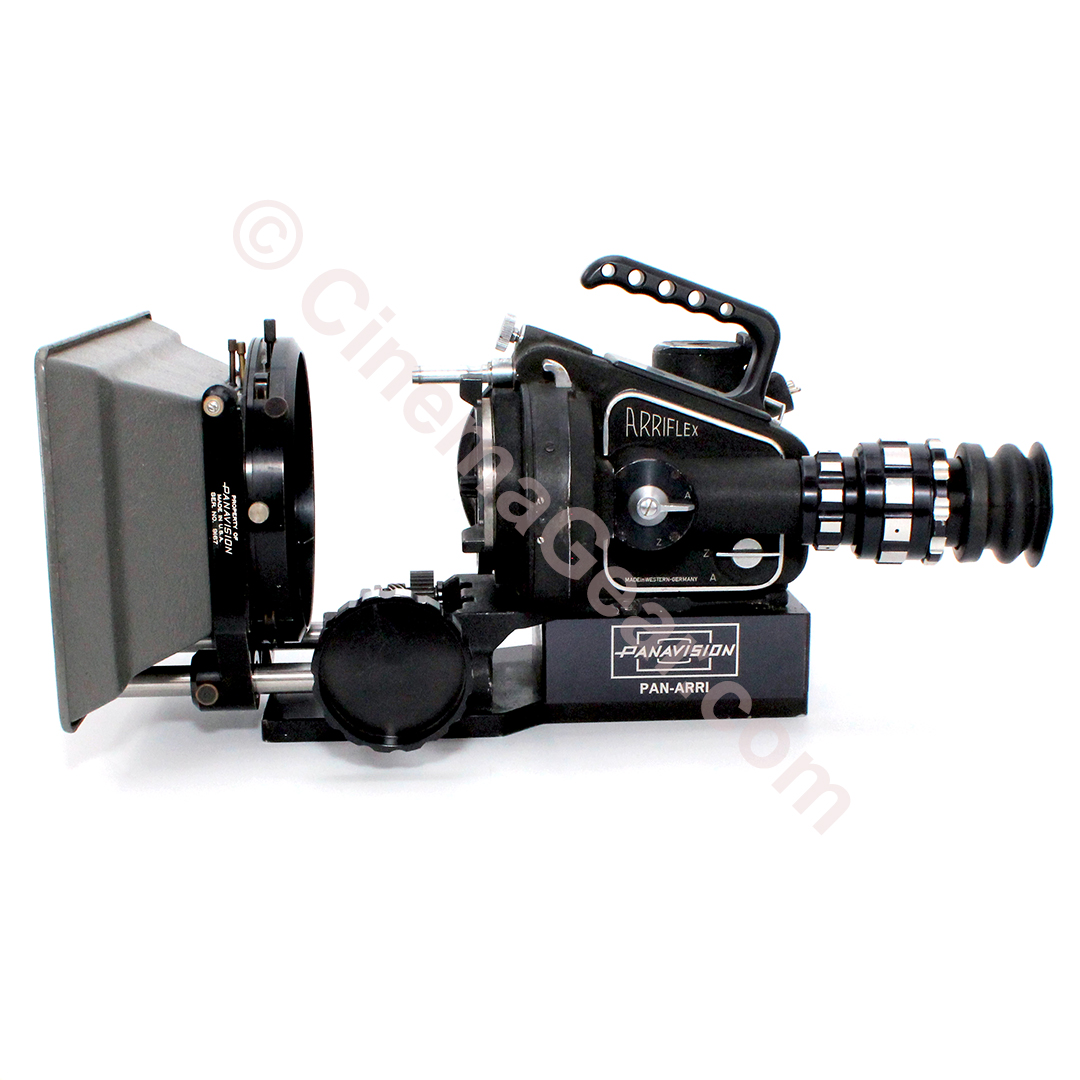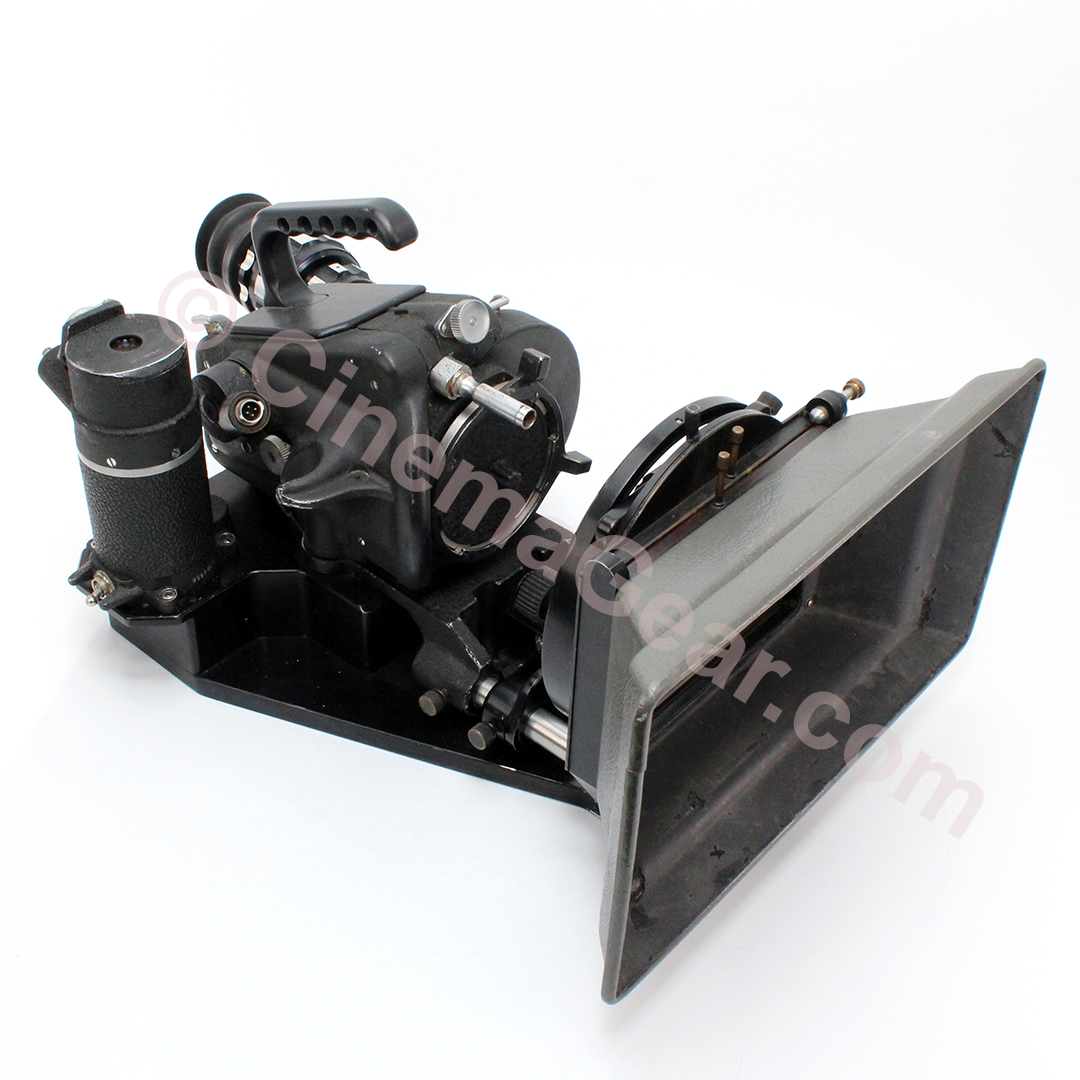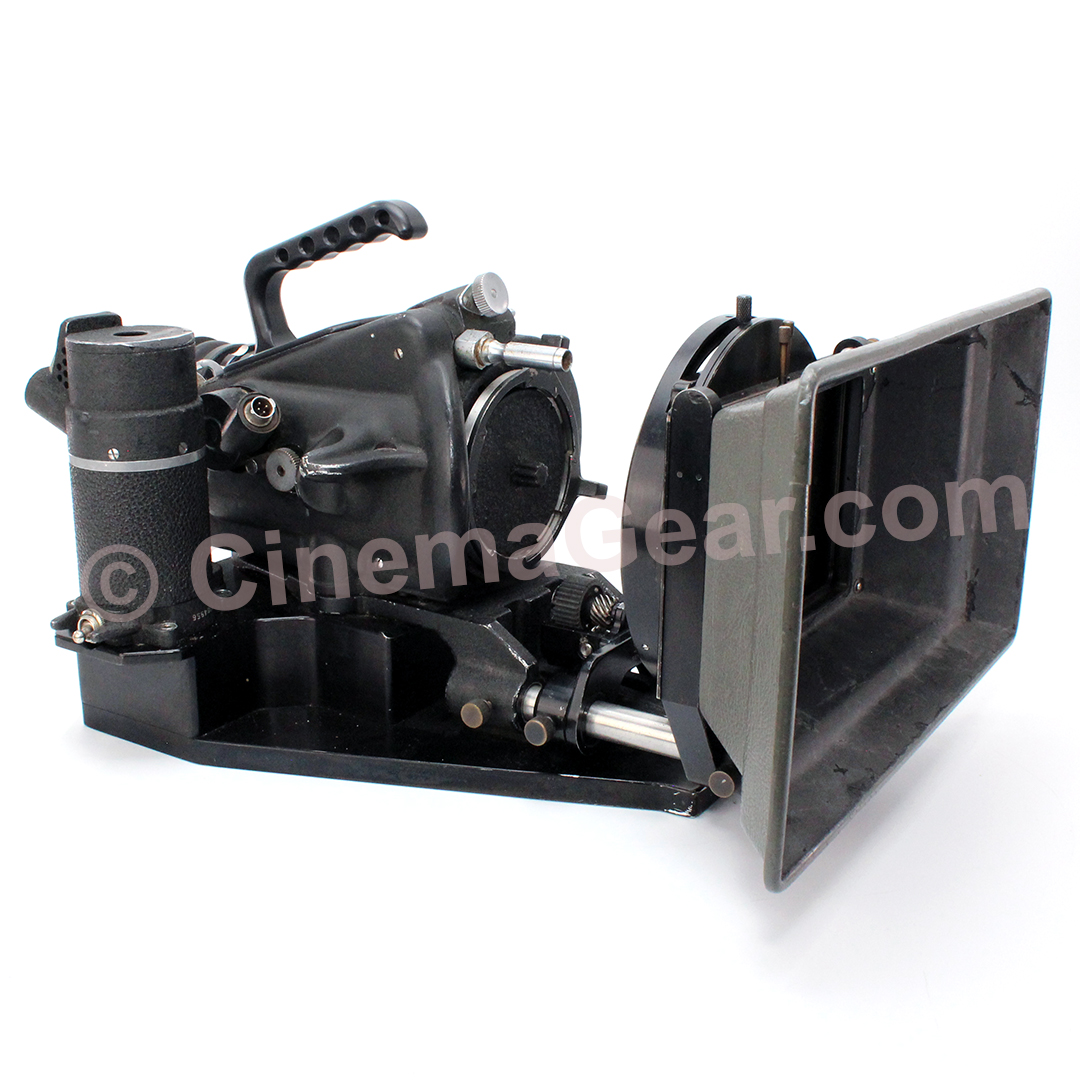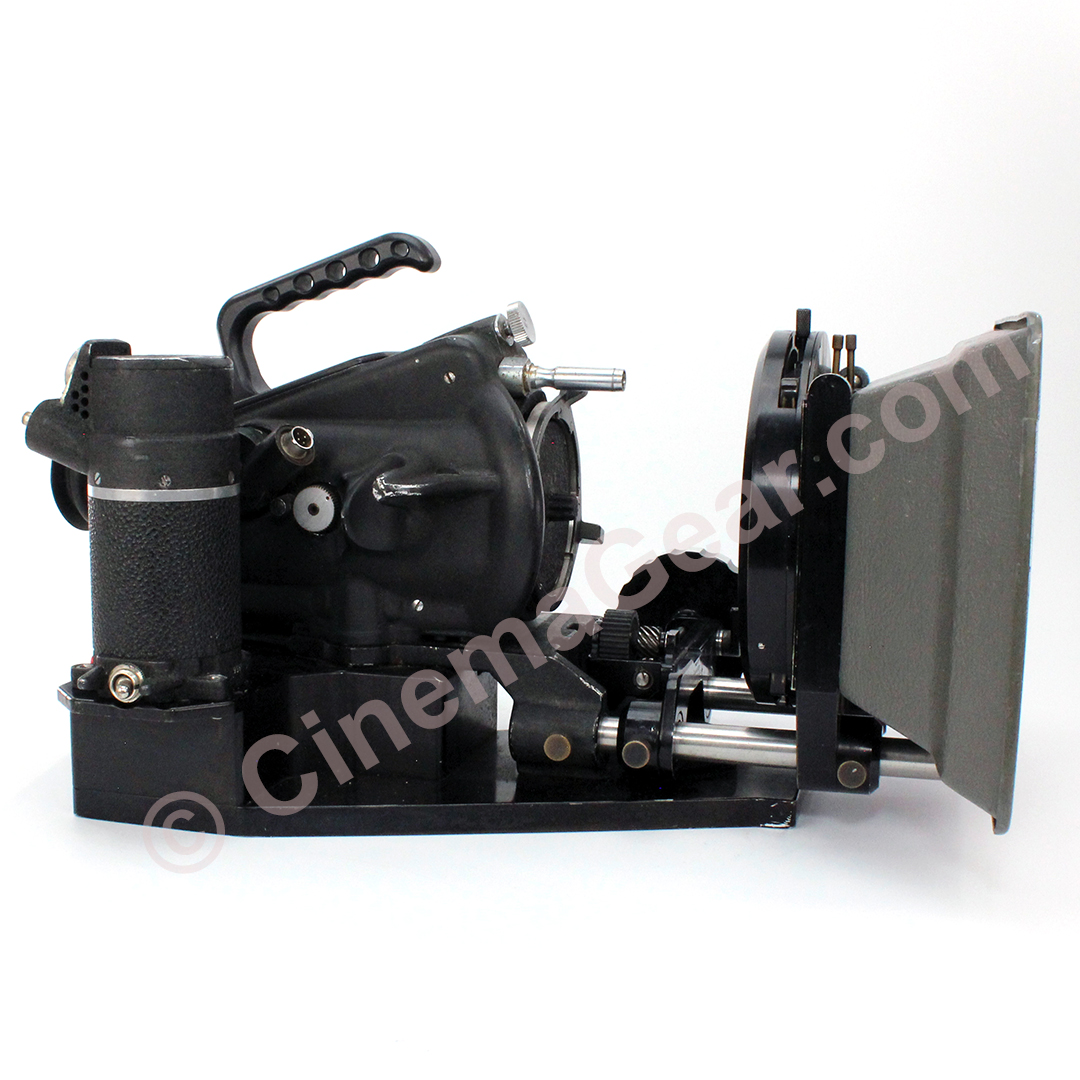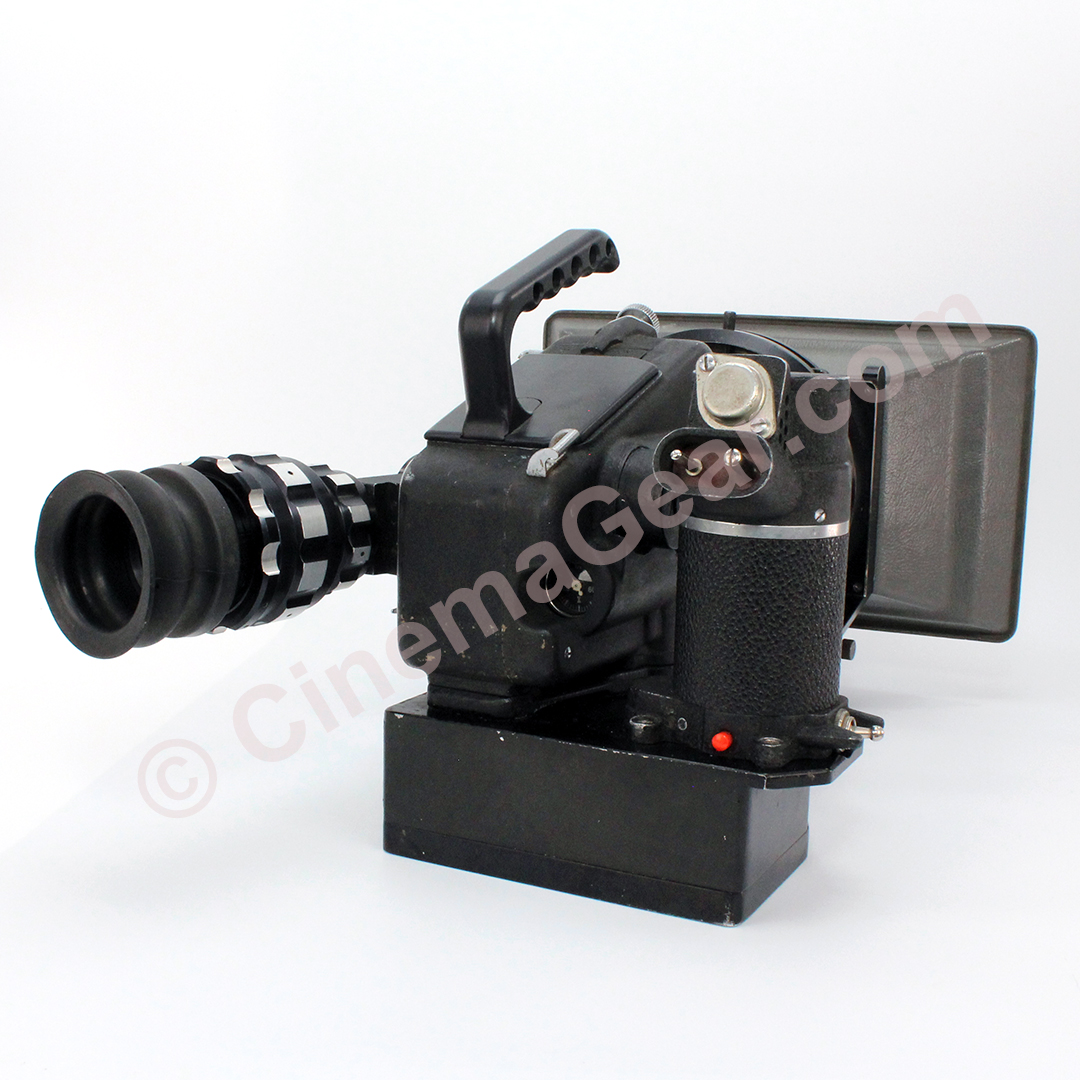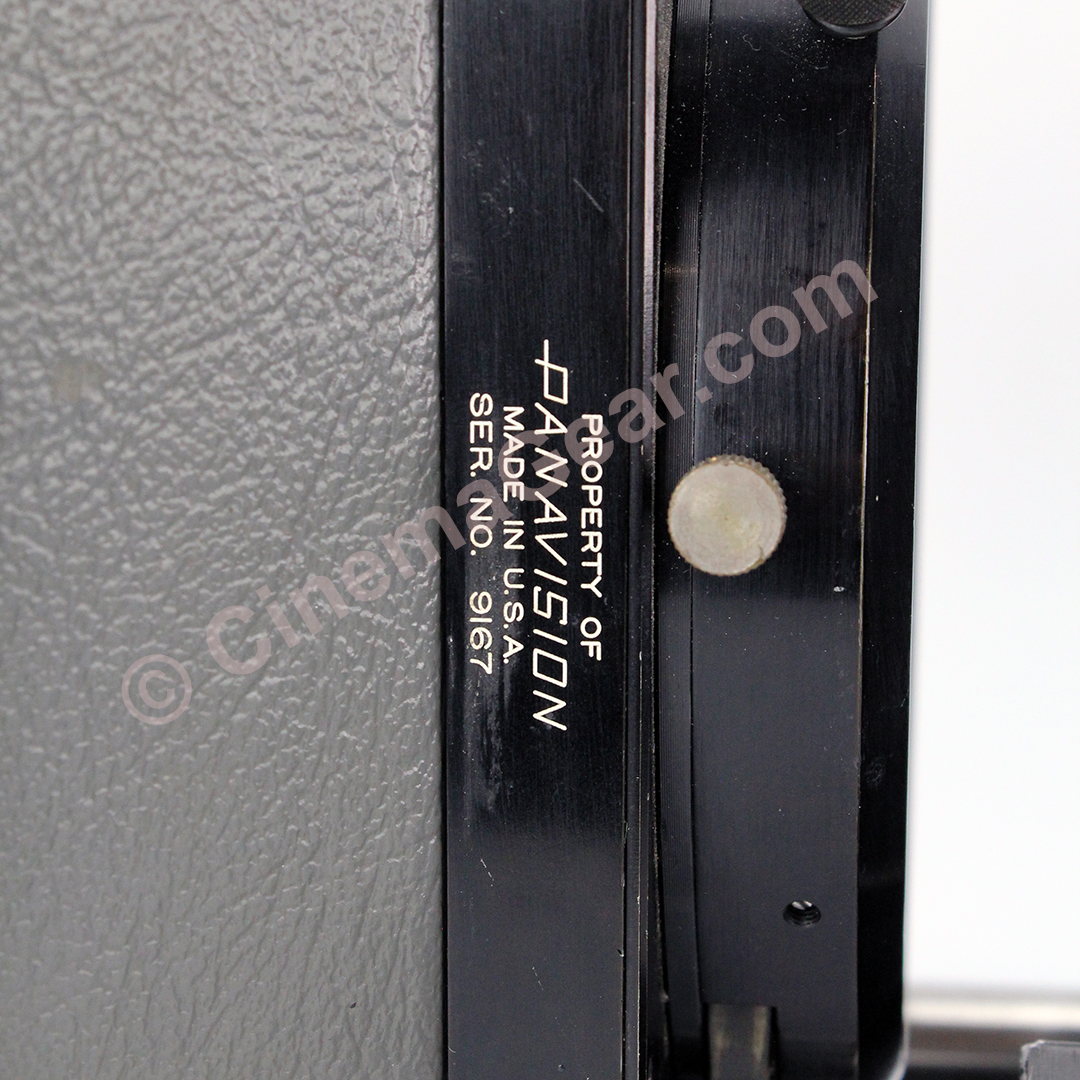
Pan ARRI 35 II C
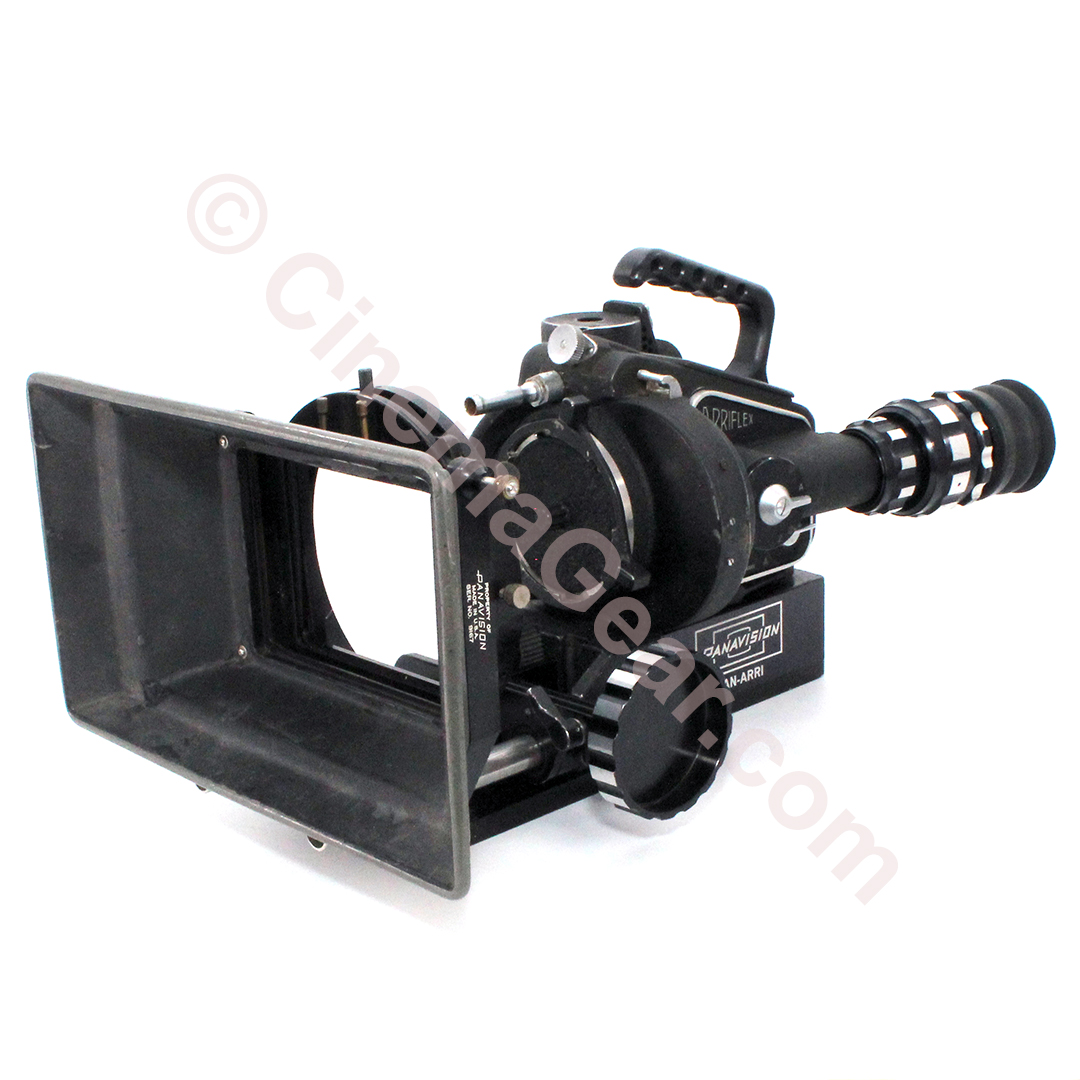
$9,995
Item #C13062
While we were in the middle of moving from our previous location to our present one, we were offered a collection of cameras and accessories that we never had much of a chance to sort through. This diamond in the rough came to the surface recently when we were reorganizing our warehouse area. I remember first seeing a Pan ARRI 35 II C around the same time I was refurbishing one of the giant fiberglass-housed, shoulder mounted, Arriflex II C blimps.
Those ARRI blimps were a marvel of mis-engineering, being huge and hard to operate. The Pan ARRI, on the other hand, was engineered so that most of the Panavision accessories of the time could be used with an ARRI II C. Conceptually, a much better and more well-executed idea. If your show was using Panavision equipment, many of the accessories could be shared with your B or 2nd Unit camera. The only drawback for this particular camera is that it is fitted with a BNCR lens mount.
This working camera is offered as shown, with Panavision iris rods, a Panavision follow focus, and a Panavision matte box, as well as bigger, brighter magnifying eyepiece, and an Arriflex constant speed motor. It also comes with a recreation of the original Pan-ARRI logo, as well as the wonderfully convenient and brilliantly designed Ted Rae top carry handle. (Some of the pictures below were taken before the recreated logo badge was installed)
Photo Gallery:
A Brief History of ARRI
ARRI was founded by August Arnold and Robert Richter in Munich, Germany in 1917. Friends from school, Arnold and Richter already had some experience in the motion picture business, having worked as cameramen and lab technicians. They began their business by building a film copying machine using parts out of an old film projector they purchased secondhand. While sales of their machine were going well, both men continued their work in many aspects of the movie business, including as cinematographers, producers, and lighting technicians. In 1918, they worked on their first film with director Fred Stranz, a western called "Der Schwarze Jack" (or Black Jack).
By 1920 they were producing their own short films, and using the profits to improve their printers. In 1924, Arnold began designing their first motion picture camera, the KINARRI 35, as well as their first lighting equipment. This camera was completed by 1925 and Arnold sent it to Richter in the United States where he had gone to learn about the American film business. Their second camera, the TROPEN, which featured an adjustable rotary shutter, was produced during this time as well. In 1928, the KINARRI 16 was developed for an amateur filmmaking audience, along with a 2nd more advanced model that featured an internal spring wind mechanism. In 1934, with sound films now dominating the market, ARRI developed a portable sound camera, but patent issues prevented it from being sold commercially. Success came soon after though.
In 1937, the ARRIFLEX 35 was released, a revolutionary handheld spinning mirror reflex 35mm motion picture camera that featured a spinning mirrored shutter and a parallax-free erect image viewfinder. This design, which saw many innovations and updates after its introduction, was produced until 1978. The Arriflex 35 is a World War II vintage camera, and saw use by the German military during the war. Some early examples of the ARRI 35 were captured by American troops and brought back to the US. In 1946, ARRI introduced the next generation of this camera, the Arriflex 35 II. So influential was the Arriflex 35 series of cameras, that it was awarded an Academy Award of Merit in 1983 for "the concept and engineering of the first operational 35mm, hand-held, spinning mirror reflex, motion picture camera."
The Arriflex 35 II B model was released in 1960, and featured a new transport claw design and a fixed 180-degree shutter. In 1964, the Arriflex 35 II C model was introduced, bringing with it an improved viewfinder system with larger viewfinder optics, interchangeable ground glasses, an interchangeable eyepiece, and a variable shutter. The Arriflex 35 II C was manufactured through 1979.
Sources:
- Jon Fauer, "The History of ARRI in a Century of Cinema", ARRI, updated 2021, View source.
- "100 Years Inspiring Your Vision", updated 2017, View source.
- Jorge Diaz-Amador, "Camera Profiles - Arriflex 35-II Series," updated 2020, View source.
